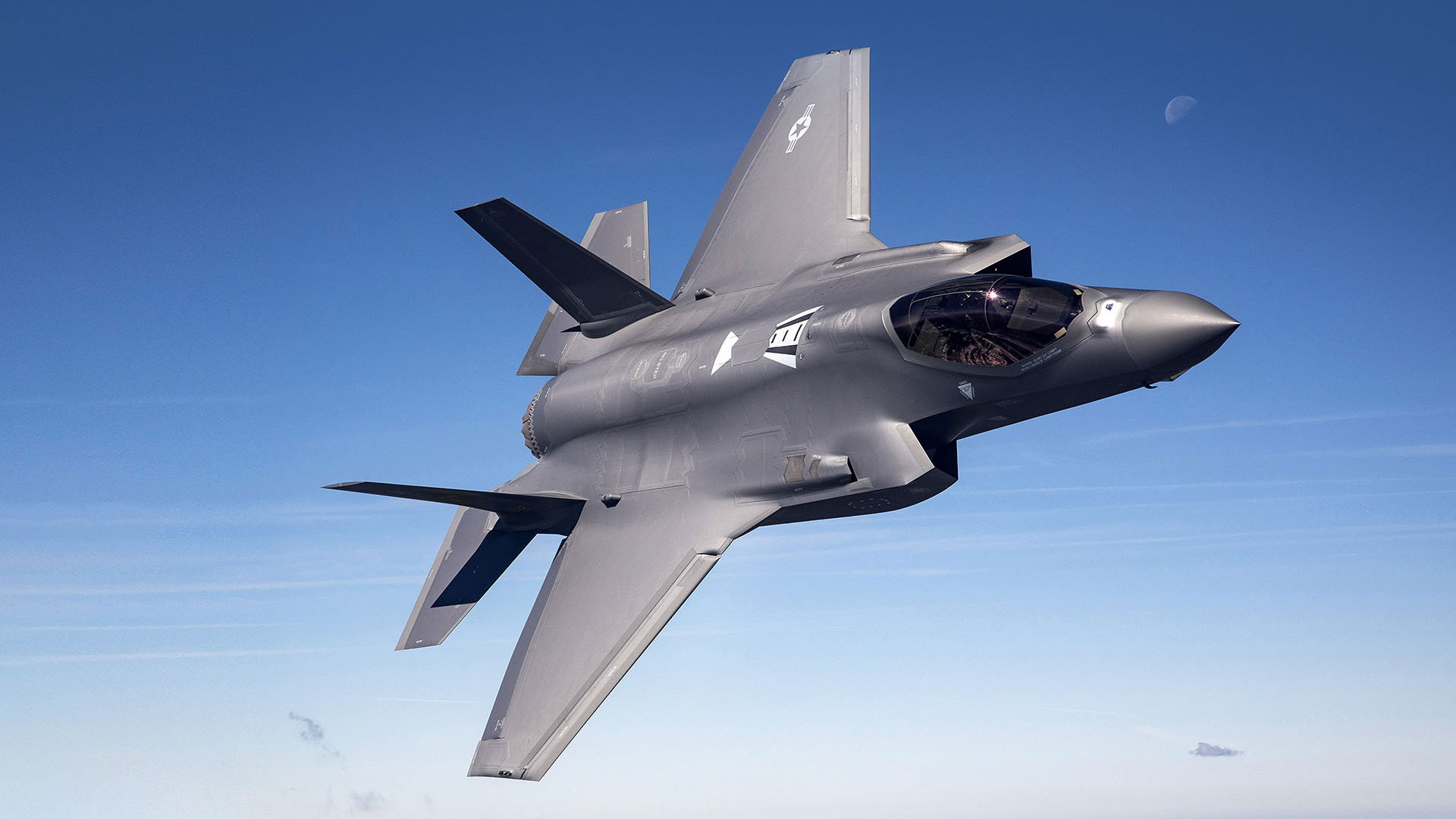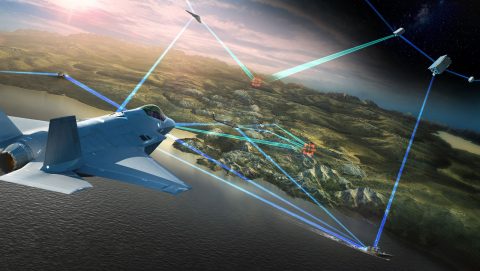Mission Integration: Protecting the Mission Layer by Layer
The sun is beating down on a soldier where every second counts on the battlefield.
The soldier is defending a small strategic base—one that is crucial for the mission. Suddenly, an adversary launches a hypersonic missile to their base. Will they be ready?
Thanks to a network of sensors calculating massive amounts of data across ground, sea, air and space, they’re ready for whatever threat comes their way. The soldier is protected by layered defense interceptors that are prepared to launch as quickly as it takes to read this sentence—in just a moment. These interceptors launch and meet the missile threat with precision on target. The solider and the base are safe.
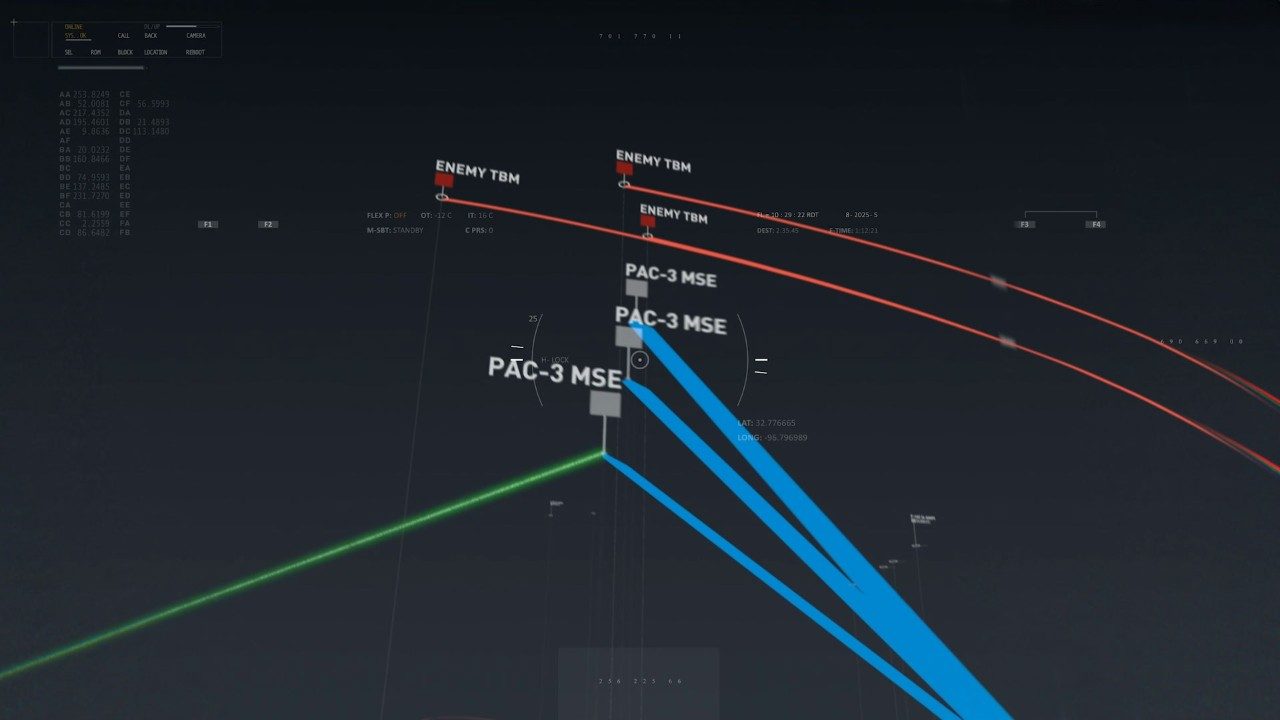
Sensors can crunch oceans of data with the help of AI-powered algorithms to predict the missile’s path and position.
This is what Lockheed Martin calls Mission Integration—connecting 21st Century Security® strategy with systems that drive innovation with the mission in mind. It ensures new defense tech developments are built to deliver outcomes to keep people safe. A layered-defense system uses Mission Integration to deliver quick decisions for real-world needs.
Lockheed Martin is transforming how defense tech is developed and delivered working shoulder-to-shoulder with experts across the industry to protect from threats in air, land, sea and space.
Here’s how.
Lockheed Martin is working to advance the U.S. Army’s Joint Integrated Fires vision, which enables seamless connection between offensive and defensive systems across multiple domains. Testing events, like Valiant Shield 2024 and a captive carry test, solidify the ability to integrate these existing technologies to enable multi-domain rapid, data-driven decisions.
Integrating offensive systems and defensive assets that weren’t originally designed to work together provides the warfighter greater agility on the modern battlefield. Securely integrating sensors, effectors and mission command systems allows users to choose the best effector for flexible employment against each target. Data linked fires also provides the U.S. Army with a capability able to engage mobile targets without an expensive seeker.
Also, the THAAD Weapon System successfully integrated and launched a PAC-3 MSE to intercept a tactical ballistic missile target using proven Hit-to-Kill technology. With this successful demonstration, the THAAD Weapon System can now be deployed anywhere with minimal Patriot equipment required and limited to PAC-3 MSE M903 launchers and PAC-3 MSE interceptors.
This integration further exemplifies Lockheed Martin’s commitment to building a layered and networked missile defense system that enables joint all-domain operations. The result: expanded 21st Century Security solutions that give the warfighter more options with existing equipment, allowing them to choose the best interceptor for any threat they face.
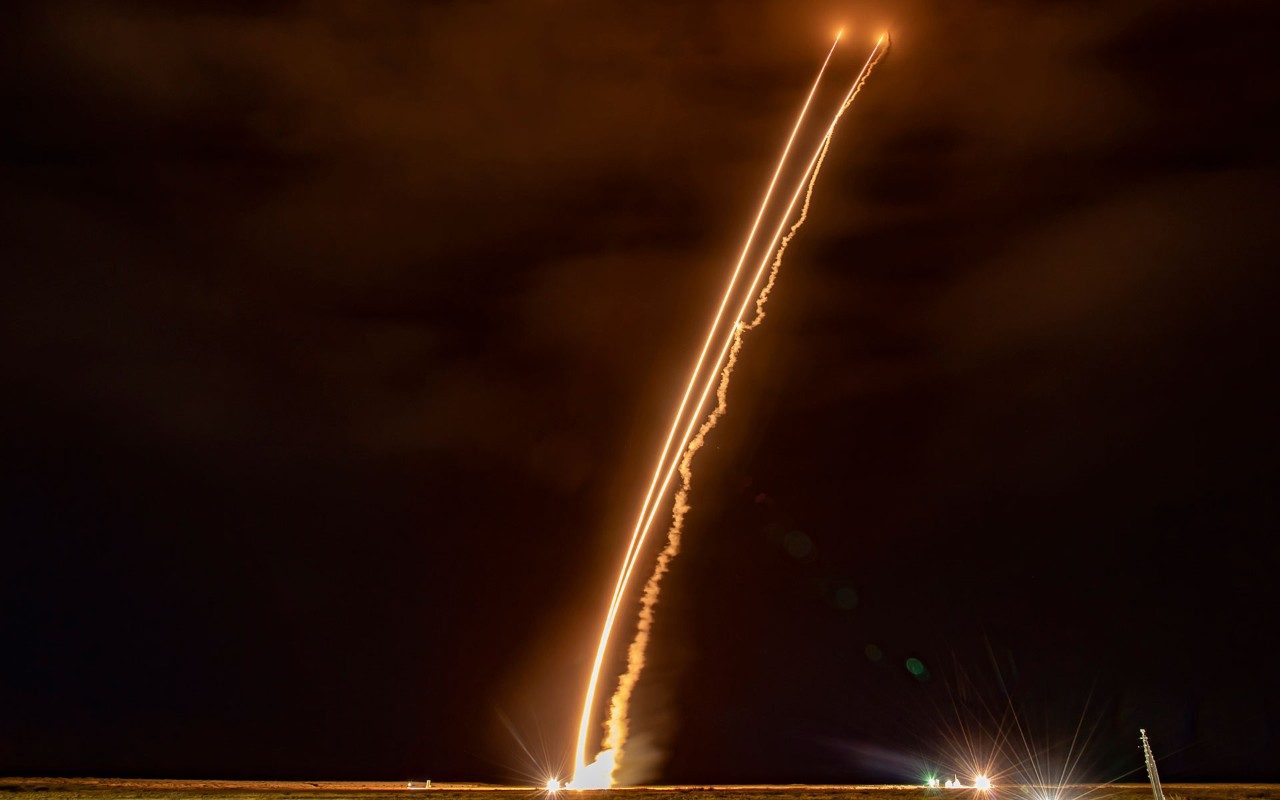
Lockheed Martin engineers are transforming the combat-proven Sniper® targeting pod — a staple on 4th Generation aircraft worldwide — into an edge communications and computing node to enable combined joint all-domain command and control.
The team is working on enhancing Sniper capabilities to allow missions in which F-35 5th Generation fighters and their advanced sensors would serve as forward observers that identify and track targets. The F-35 could then share precise coordinates with F-16s and ground-based Command and Control Systems, that allow the employment of MLRS family of munitions from either HIMARS or Multiple Launch Rocket System (M270).
Two technical enhancements in the new Sniper Networked Targeting Pod will ensure 4th Generation aircraft are in sync. An advanced datalink will enable the sharing of target and surveillance information. A Mobile Ad-hoc Network radio will support a decentralized mesh network of multiple air, ground and sea platforms, all ready to share and act on that information. 5G.MIL® Unified Network Solutions will ensure the data remains highly secure and available to the right user at the right time
Lockheed Martin Apache Fire Control sensors continue to provide unmatched targeting and pilotage capabilities for Apache aircrews. These sensor systems, now called the Gen 3 Target Acquisition Designation Sights/Pilot Night Vision System, include the latest sensor upgrades resident on AH-64E Version 6 Apache attack helicopters. The Gen 3 Day Sensor Assembly, extended LONGBOW® Fire Control Radar and Gen 2 Radar Frequency Interferometer enable Apache aircrews to detect and destroy threats during day, night and in adverse weather conditions. By enhancing the ability to detect, track and engage targets in the most challenging environments at extended ranges, Lockheed Martin Apache Fire Control's continuous modernization initiatives will enable the U.S. Army to transform in contact and add the Apache’s ability to dominate in the Air to Ground Combat Space.
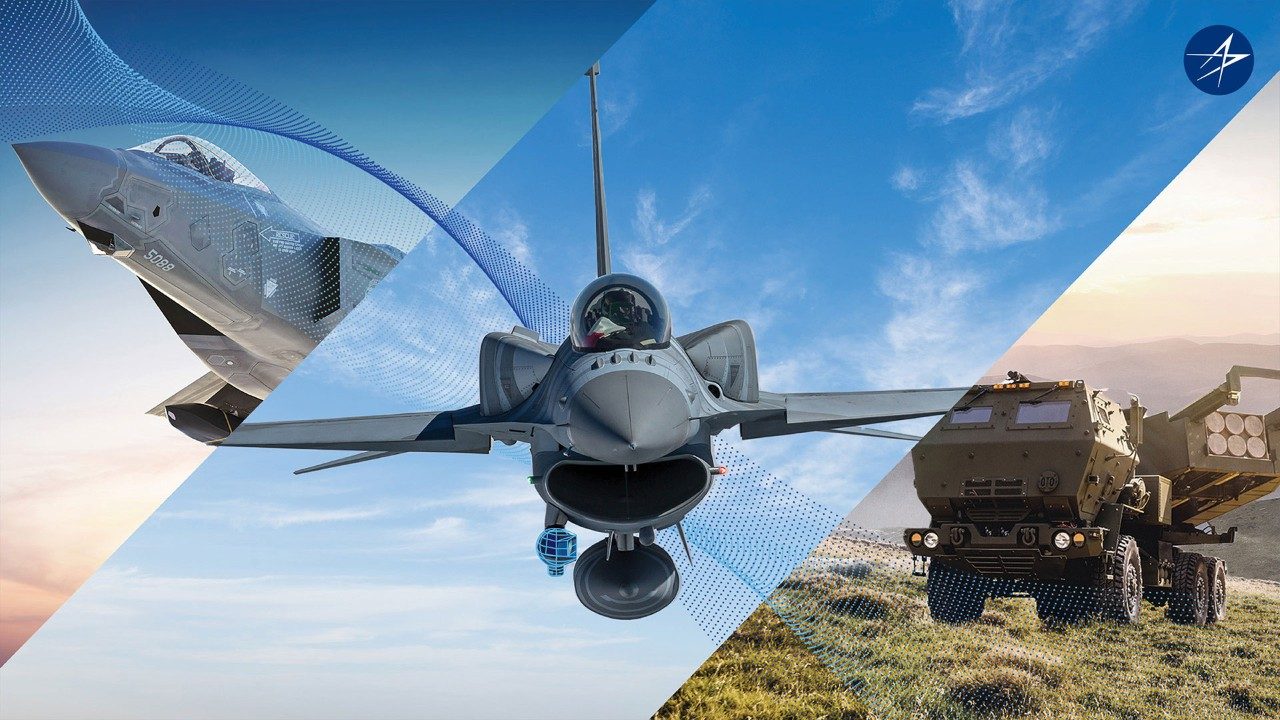
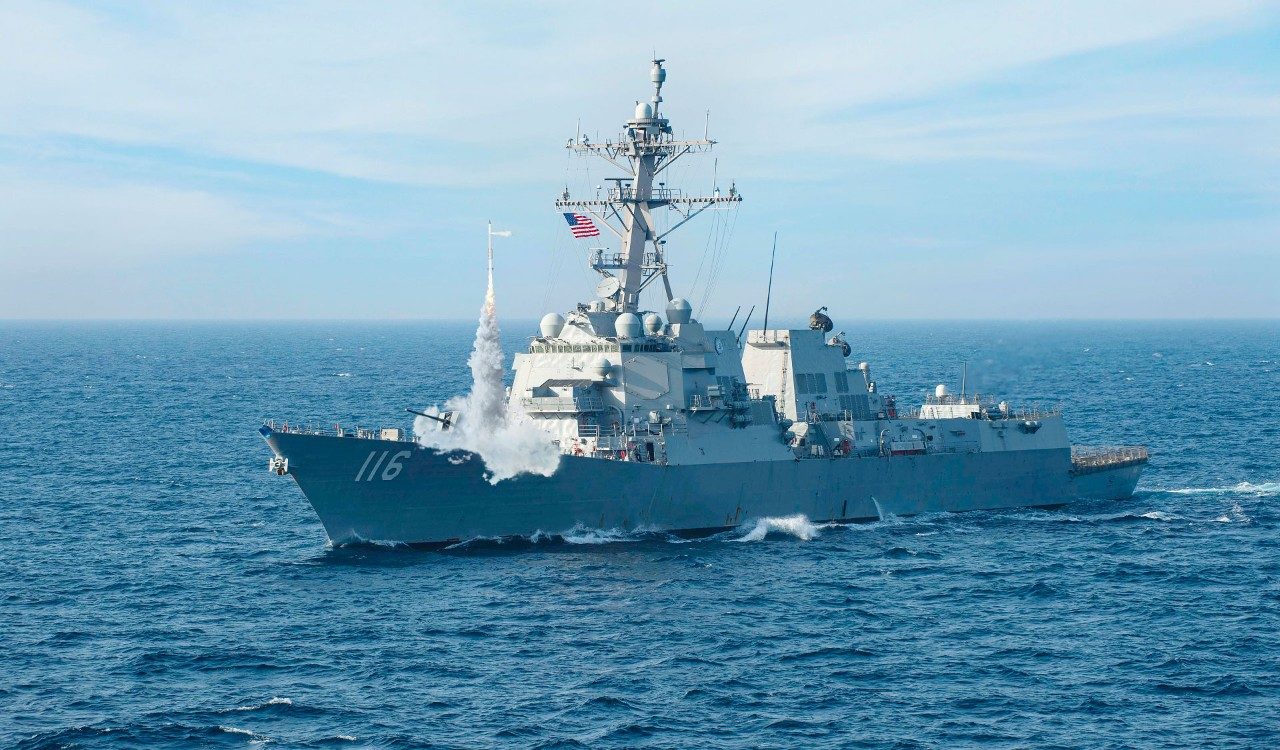
Lockheed Martin is working to deliver enhanced Integrated Air and Missile Defense capability to the Aegis combat system to defend against advanced threats at sea.
PAC-3 MSE has also proven integration capabilities with the Integrated Battle Command System, the U.S. Army’s next-generation Command and Control System in multiple flight tests. By integrating with multiple different systems, PAC-3 MSE can deliver its industry-leading capabilities to warfighters across the globe to defend what matters most.
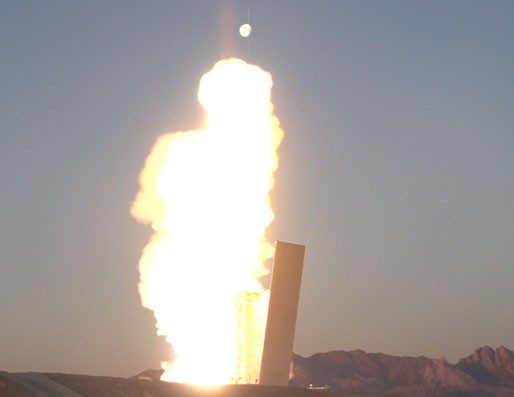
PAC-3’s unmatched capabilities defend against advanced threats including tactical ballistic missiles, cruise missiles, hypersonic missiles and aircraft.
Lockheed Martin designed an effector, radar and launcher solution to rapidly deploy Joint Air-to-Ground Missile (JAGM) on naval platforms. Whether employed from the current Littoral Combat Ship surface-to-surface missile module launcher or Lockheed Martin’s revolutionary new, modular, reloadable, JAGM Quad Launcher (JQL), JAGM’s multi-domain target engagement capabilities provide requisite utility to maritime forces.
The JQL, a vertical launch system when operationally employed, modifies the M299 Launcher system to be integrated into a quad-pack launcher that can be easily deck-mounted onto U.S. Navy ships. Its design allows naval users to fire and rapidly reload individual cannister cells within a matter of minutes.
Lockheed Martin, as the Missile Defense Agency’s Next Generation Interceptor (NGI) prime contractor, will provide the most modern, reliable and technically advanced interceptor in the history of the Ground-based Midcourse Defense system. NGI is a first line of defense, tip-to-tail interceptor designed to protect the homeland against the evolving long-range ballistic missile threats. NGI is also the cornerstone of the Golden Dome for America, and it will work to deter and defend the homeland from rogue, near-peer and peer adversaries for many decades to come.
With NGI, Lockheed Martin is leveraging vast corporate experience in missile intercept technology, space-hardened systems, exo-atmospheric threat intercepts, optical payload development and strategic missile systems. This includes testing real hardware and software that underpins the completion of important program milestones while building confidence through tangible risk reduction for rapid developmental progress.
Because of the integration of programs and systems like these, the intercept is clean, the base is safe and the mission is a success.
For the U.S. and allied nations working to defend against evolving threats, these combat-proven capabilities deliver more than just protection—they enable coordinated, layered responses across domains. As the Department of Defense advances initiatives like Golden Dome for America, Mission Integration becomes the decisive advantage, and Lockheed Martin is delivering the connected systems and resilient architectures that turn that vision into reality.
21st Century Security isn’t just about building better hardware—it's about connecting global systems that are ready when the milliseconds and seconds matter. That is how you stay Ahead of Ready.


